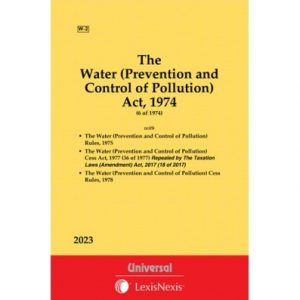Environmental Laws in India: Unveiling the Path to Sustainable Living

India is a vast country of ancient wisdoms and twenty-first century dreams inhabited with over 1.3 billion individuals. The immense geographical expanse of this sub-continent ranges from the Himalayan hills to the beach side at the peninsula coastline, bearing a variety of natural inheritance that is as multifarious as is its cultural legacy.
Yet, alongside its undeniable beauty lies a pressing challenge: balancing ruthless growth and the conservation of its environmental bounties. This era of fast industrialisation, urbanisation has made it necessary for protecting and using India’s natural resources in sustainable way.
These developments, which have included enactment of environmental laws, constitutional directives as well as ‘community driven’ efforts, converge to form an integral basis upon which sustainability of the ecology is enshrined in tandem with social economic upliftment. This article will explore constitutional aspect for environmental protection and talk about environment laws in India and recommend best books on environment laws in India.
What are Environment Laws?
Environmental laws are those meant to safeguard the environment, for sustainable use of natural resources as well as humans’ health and wellbeing. Their coverage includes air and water quality, pollution control, managing hazardous waste, resource conservation and others. Environmental laws are necessary for a reason; that reason being that they make sure we have a clean and healthy environment, available for everyone. It is worth mentioning that they support environmental sustainability and preserve various types of resources necessary for the benefit of all people both in the present, and further into the future. These include local, state, federal, and global environmental statutes. Some examples of environmental laws include: The Water (Prevention and Control of Pollution) Act, 1974, Environment Protection Act, Energy Conservation Act etc.
Historical Roots of Environmental Laws in India
The development of Environment laws, in India can be traced back to a history of environmental awareness influenced by both legal and cultural factors. Legal cases and significant events have played a role in shaping the nations approach to preserving the environment.
The Bishnoi Community and the Khejri Trees
In the century the Bishnoi community in Rajasthan demonstrated environmental ethics. They deeply valued the Khejri tree, which is known for its ability to withstand droughts. This led to an incident where Bishnoi villagers sacrificed their lives to protect these trees from being cut down for construction purposes. This selfless act helped establish a conservation in India.
The Silent Valley Movement
During the 1970s Keralas Silent Valley faced deforestation due to a proposed project by the government. Local communities united against it resulting in a court decision known as M.C. Mehta v. Union of India (1986). The Supreme Court ruling emphasized safeguarding areas.
The Bhopal Gas Tragedy
The Bhopal Gas Tragedy that occurred in 1984 stands as one of the disasters globally. It underscored the need, for industrial safety measures and environmental regulations. As a response India enacted two laws; The Environment (Protection) Act of 1986 and The Public Liability Insurance Act of 1991. The calamity led to the loss of lives and a significant rise, in health problems highlighting the outcomes that occur when environmental standards are not properly enforced.
Environmental Law in India with Reference to Articles of The Constitution of India
Article 48
Article 48, in the Indian Constitution is a provision that emphasizes the responsibility of the state to safeguard and enhance the environment. This involves taking measures to preserve and improve cattle breeds while also prohibiting the slaughter of cows, calves and other animals.
Article 51 A(g)
Article 51A(g) outlines a duty for citizens of India to protect and enhance the environment, including forests, lakes, rivers, wildlife and to show compassion towards living creatures.
Article 253
Under Article 253 Parliament is empowered to enact laws for implementing any treaty, agreement or convention within the whole or part of India’s territory. This includes legislation for protection.
Article 21
Article 21 guarantees the right to life as a right in India. The Supreme Court has interpreted this article as encompassing the right to a healthy environment.
Together these four articles establish a framework for environmental preservation in India. The state bears an obligation to safeguard the environment; citizens are tasked with protecting it and Parliament holds authority to create laws ensuring its protection. The right to a healthy environment is recognized as an entitlement, for all citizens.
The Supreme Court of India has played a role, in upholding the guarantee of a clean and healthy environment. Through judgments the Court has affirmed that it is the responsibility of the state to safeguard the environment and that this duty can be enforced through legal channels. Moreover, the Court has recognized that the right to life encompasses the right to live in a healthy and clean environment.
For instance, in the M.C. Mehta v. Union of India (1986) case the Court ruled that individuals have a right to a healthy surrounding and clean environment as part of their right to life. Furthermore, it ordered the government to take measures for cleansing the Ganga River.
In another case Vellore Citizens Welfare Forum v. Union of India (1996) the Court emphasized that it is incumbent upon the government to protect and preserve our environment as a duty. Additionally, it directed authorities to implement measures, for curbing air pollution in Delhi.
Some Important Environmental Laws in India
-
The Water (Prevention and Control of Pollution) Act, 1974:
The Water (Prevention and Control of Pollution) Act, 1974 is created to regulate and manage water pollution in India. It sets standards, for the quality of water in bodies of water. This act gives both the central and state pollution control boards the power to prevent and control water pollution. It also includes provisions, for penalties in case of non-compliance. Section 24 grants the government the authority to restrict areas from being used for discharging pollutants into water bodies and even prohibits their use if necessary.
Related Book– Universal’s bare Act contains all the necessary laws required to get an in depth understanding of the The Water (Prevention and Control of Pollution) Act, 1974 (6 of 1974) with, The Water (Prevention and Control of Pollution) Rules, 1975, The Water (Prevention and Control of Pollution) Cess Act, 1977 (36 of 1977) Repealed by The Taxation Laws (Amendment) Act, 2017 (18 of 2017), The Water (Prevention and Control of Pollution) Cess Rules, 1978

-
The Environmental Protection Act of 1986:
The Act establishes a fundamental basis for environmental law in India. It outlines a comprehensive framework aimed at preserving the environment and tackling diverse environmental issues. This legislation grants the central government authority to enact measures for safeguarding and enhancing environmental quality. It encompasses areas such as evaluating environmental impact, managing hazardous substances, and enforcing penalties for non-compliance. Section 3 of the Act focuses on appointing authorities responsible for enforcing its provisions, including conducting environmental impact assessments and granting environmental clearances.
Related Book– Universal’s Bare Act on Environment (Protection) Act, 1986 not only covers a single act, but covers a diverse range of acts which are in consonance with the EPA.
They include-
- The Environment (Protection) Rules, 1986 as amended by G.S.R. 5(E), 3rd January, 2019
- The Manufacture, Storage and Import of Hazardous Chemicals Rules, 1989
- The Noise Pollution (Regulation and Control) Rules, 2000
- The Ozone Depleting Substances (Regulation and Control) Rules, 2000
- The Batteries (Management and Handling) Rules, 2001

-
The Air (Prevention and Control of Pollution) Act, 1981:
The primary goal of the Air (Prevention and Control of Pollution) Act, 1981 is to address the challenges posed by air pollution in India. This legislation sets up a framework to regulate emissions, from industries and vehicles. It empowers state governments to identify areas that require air pollution control measures and enforce emission standards, for both industries and vehicles. Section 19 of this Act confers authority upon state governments to take actions in order to prevent and control air pollution, including designating regions as air pollution control zones.
Related Book– Universal’s bare Act on Air (Prevention and Control of Pollution) Act, 1981 along with Rules, 1982 is a comprehensive guide which contains all sections, schedules and is upto date with recent amendments.

-
The National Green Tribunal Act, 2010
This act set up the National Green Tribunal, or NGT. This new court deals with legal cases about the environment in India. The NGT can hear cases about enforcing environmental laws and environment-based rights. Section 14 of the Act authorises the NGT to pass judgments to restore the environment, make violators pay damages, and punish them when they break environmental laws.
Related Book– Universal’s Bare Act on The National Green Tribunal Act, 2010 (19 of 2010) as amended by The Finance Act, 2017 (7 of 2017) (w.e.f. 26-5-2017) with covers: • The National Green Tribunal (Manner of Appointment of Judicial and Expert Members, Salaries, Allowances and other Terms and Conditions of Service of Chairperson and other Members and Procedure for Inquiry) Rules, 2010

-
The Wildlife Protection Act from 1972:
This Act is all about protecting wildlife in India. It puts different animals into different schedules, giving them different levels of protection. The Act deals with stuff like hunting, poaching, and ruining habitats and it sets up protected areas like national parks and wildlife sanctuaries too. Section 9 says you can’t hunt any animals that are in Schedules I II, III, or IV unless you get special permission first and meet certain conditions.
Overall, the motive is to protect and conserve wildlife in the country. It wants to stop people from illegally hunting animals or destroying forests where they live. The Act establishes parks and sanctuaries where wildlife can thrive without human interference. But it does allow some hunting in specific situations if you get approval as per the Schedules mentioned above. The main goal is preserving India’s wildlife while managing human interaction.
-
The Energy Conservation Act of 2001:
ECA is a law in India that focuses on using energy in a sustainable manner and conserving it. This legislation was enacted to address the nations increasing energy demands and the imperative to reduce greenhouse gas emissions. The ECA introduces measures to encourage energy conservation, such as establishing standards for energy appliances and equipment promoting energy audits and implementing energy management systems. The implementation of the ECA is overseen by the Bureau of Energy Efficiency (BEE) a mandated organization formed under this act. The BEE holds responsibility, for setting efficiency standards promoting audits and management systems as educating the public about conserving energy.
Related Book– Universal’s Energy Conservation Act, 2001 along with allied Rules contains all the designated laws and allied rules to understand the Energy conservation regulation structure in the country.

-
The Biological Diversity Act, 2002:
One of the notable acts in India is the Biological Diversity Act, 2002 which seeks preserve the country’s abundant biology and promote their long-lasting utilization. This Act has been passed pursuant to commitments of India made in accordance with the UN Convention on Biodiversity (CBD). According to the act; biological diversity is defined as the range or variability that exists within the living organisms obtained from all resources in the both terrestrial as well as marine and other aquatic ecosystems that form the natural habitats. This encompasses all kinds of variation such as intra-species, inter-species and between ecosystems. The Act’s objective: Conservation of biological diversity and Sustainable use of its components
Related Book– Universal’ Biological Diversity Act, 2002 along with Rules, 2004 captures along with the main act, the United Nations Conventions, Guidelines to access of Biological Resources, and multiple notifications ideal to get a good understanding.

-
Indian Forest Act 1927
One of the oldest and most important environmental laws in India is the Indian Forest Act of 1927. It came into being in order to control the utilization of forestry resources since these are significant determinants of the state’s environment and economy. The Act also establishes a number of mechanisms to protect forests, including:
- An Inquiry into the Making Up of Forestry Departments.
- The need for permits for activity such as removal of trees or carrying timber.
- Prohibited Activities in Forests like Hunting and Fires.
Related Book– Universal’s bare act on Forest Act, 1927 covers The Forest (Conservation) Act, 1980 and Rules, 2003 with The Compensatory Afforestation Fund Act, 2016 and is an ideal book to know about the section, amendments and notifications.

-
Scheduled Tribes and Other Traditional Forest Dwellers (Recognition of Forest Rights) Act, 2006-
FRA is an essential law guaranteeing forest land and resources to forest-dwelling tribal communities as well as other traditional forest dwellers (OTFDs). Further, the Act establishes Gram Sabhas for supervising village-based forest management.
Related Book– Universal’s bare act The Scheduled Tribes and Other Traditional Forest Dwellers (Recognition of Forest Rights) Act, 2006 covers all bases and also contains the 2019 amendment related to Jammu and Kashmir reorganisation.

Conclusion
Sustainable utilization of India’s diverse natural resources is more than just an aspiration. At the heart of India’s future lie the contradictions of development and conservation, in which it can navigate towards a more balanced future.
We have looked at the country’s dedication to protecting its environment through a number of statutes such as environmental acts, constitutional provisions, and actual cases. India has shown flexibility and creativity when facing environmental problems, from the historic wisdom of the Bishnoi community to the modern wonders of environmentally sound agriculture in Sikkim.
The Rajasthan Canal Project shows how sustainable water management can turn things around. Solar power initiatives offer a direction towards the use of cleaner and renewable sources of energy. Meanwhile, as India is still dealing with the uncertainties brought about by rapid urbanization, industrialization, and climate change, its history together with current innovative solutions directs its path towards a more sustaining future.
FAQs
- What is the new environment law in India?
The new Environment law in India is the Environment (Protection) Amendment Act, 2022 and subsequent amendment rules, 2022.
- What is rule of environmental law?
It is a principle that the environment is a public good, and that everyone has a right to a clean and healthy environment.
- What is the origin of the environmental law?
The Bishnoi Community and the Khejri Trees, Silent Valley Movement, Bhopal Gas Tragedy etc.
- What was the first environmental law in India?
The first major environment law in India was the Environment Protection Act, 1986
- Why are environmental laws important in India?
Environment laws are important to safeguard the ecosystem, have clean and proper surroundings and to punish those who offend the environment and surroundings.

